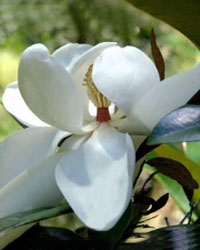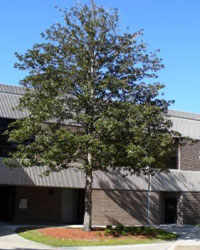Magnolia grandiflora - Southern magnolia, Bull bay






Family Magnoliaceae
Description:
Approximately one hundred to two hundred species (depending on the scientific authority) of Magnolia are found in tropical America and Asia. The southern magnolia is one of the southern icons. It is native throughout the southeastern U.S. including north Florida and into northern Mexico. Typically, wild plants are found in moist environments. It is a long lived evergreen tree. The leaves are large and leathery. Fragrant white flowers can be as large as twelve inches across. Flowers are produced in late spring and summer. Traditionally, the magnolias were classified as dicotyledons. Some scientists consider magnolias to be descendents of a basal group of flowering plants that preceded the development of monocotyledons and dicots.
Location:
See this plant on the east side of building 10. Several southern magnolias are planted on campus.
Size:
Large tree to about 100 feet tall.
Care Instructions:
Light: full sun to part shade
Water: drought tolerant when established, may benefit from irrigation during a prolonged drought
Soil: very adaptable, no special requirements
This native tree is widely planted in northeast Florida. They are adaptable to a wide range of garden conditions. Young plants may require irrigation during prolonged droughts.
